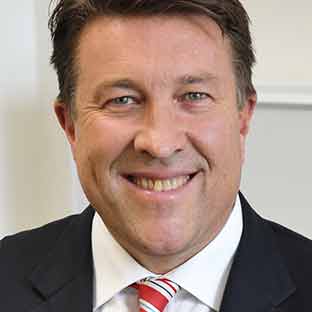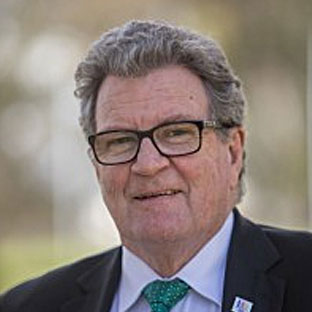New Drug To Fight Hospital Superbug Infection
Melbourne, Australia , 20 June 2012 – A new therapy to treat a common hospital superbug* infection Clostridium difficile, will soon be available to Australian & New Zealand patients.
Melbourne biopharmaceutical company Specialised Therapeutics Australia Pty, Ltd. (STA) has entered into an exclusive distribution & license agreement with US based Optimer Pharmaceuticals, Inc. (Optimer) to develop and commercialise the drug DIFICID in Australia and New Zealand.
This macrolide antibiotic therapy, taken in tablet form, is regarded as a breakthrough treatment to help fight the serious CDI, which typically develops in patients using broad-spectrum antibiotics. The organism – which is resistant to many common household and commercial disinfecting agents – targets the large intestine, causing diarrhoea. It is extremely common in hospitals and aged care facilities and can be fatal.1
A recent media report indicated 14 Victorians died from the infection during a 15-month period in 2010 and 2011.2 According to data generated by the Quebec provincial hospitalisation database, there were 7004 cases of C. difficile across Quebec from April 1st 2003 to March 31st 2004, and 1270 people died after contracting CDI.3
STA Chief Executive Officer Mr Carlo Montagner said: “CDI presents a serious bacterial health threat and current CDI treatment options available in Australia and New Zealand are limited. Our license of DIFICID provides a great opportunity to bring a much-needed new therapy to patients.”
DIFICID is the first in a new class of macrolide antibiotics, which are minimally absorbed by the bloodstream and have been shown to fight the CDI infection while leaving healthy gut flora untouched.4 DIFICID works by inhibiting the bacterial enzyme RNA polymerase, resulting in the death of C. difficile bacteria.4 Patients typically develop CDI when using broad spectrum antibiotics, which disrupt normal gut flora and enable the infection to take hold.
Hypervirulent strains of CDI, including PCR ribotype 027 strains recently identified in Australia, have been associated with epidemic spread and high rates of severe disease and death.5
Risk factors for CDI include exposure to antimicrobial drugs, gastric acid-suppressive therapy, advanced age, prolonged hospitalisation, cancer chemotherapy, co-morbidity and immuno- suppression. Although most cases have been in hospital inpatients, increasing numbers of community-associated cases are now being reported.1
A leading Australian authority on C. difficile, Professor Thomas Riley from the University of Western Australia, said data showed patients treated with DIFICID were “significantly less likely” to develop recurrent infections.6,7
He said new treatment options like DIFICID were highly desirable, with infection rates rising “two to three fold” in public hospitals around the country.
An application to make DIFICID widely available in Australia has been filed with the Therapeutic Goods Administration, with the drug expected to be launched by June 2013.
Optimer Chief Executive Officer Pedro Lichtinger said he looked forward to DIFICID being widely available in Australia and New Zealand. “We are committed to enabling better outcomes for patients with this difficult to treat infection. I believe, this is a truly innovative therapy providing a new patient option for an unmet medical need.” he said.
DIFICID is approved by the U.S. Food and Drug Administration (FDA) for the treatment of Clostridium difficile-associated diarrhoea (CDAD) in adults 18 years of age or older. Likewise, the European Commission granted Marketing Authorisation to fidaxomicin for the treatment of adults with Clostridium difficile infections under the trade name DIFICLIR™.
* Superbug is a common reference to an organism or infection, which is resistant to multiple antibiotics.
References:
- Cheng AC, Ferguson JK, Richards MJ, et al. Australasian Society for Infectious Diseases guidelines for the diagnosis and treatment of Clostridium difficile infection. Med J Aust 2011; 194: 353-358.
- The Age, Saturday 26 May 2012.
- Eggertson, L. CMAJ 2004; 171: (11) 1331-1332
- Duggan ST. Fidaxomicin: In Clostridium Difficile Infection. Drugs 2011
- Stuart R, Marshal C. Clostridium difficile infection: a new threat on our doorstep. Med J Aust 2011; 194: 331-332
- Louie TJ, Miller MA, Mullane KM et al. Fidaxomicin versus Vancomycin for Clostridium difficile Infection N Engl J Med 2011;364:422-31.
- Cornelly OA, Crook DW, Esposito R, et al. Fidaxomicin versus vancomycin for infection with Clostridium difficile in Europe, Canada, and the USA: a double-blind, non-inferiority, randomised controlled trial. Lancet 2012
About CDI
Clostridium difficile infection (CDI) has become a significant medical problem in hospitals, long-term care facilities and in the community. CDI is a serious illness resulting from infection of the inner lining of the colon by C. difficile bacteria, which produce toxins that cause inflammation of the colon, severe diarrhoea and, in the most serious cases, death. Patients typically develop CDI from the use of broad-spectrum antibiotics that disrupt normal gastrointestinal (gut) flora, possibly allowing C. difficile bacteria to flourish. Older patients in particular are at risk for CDI, potentially because of a weakened immune system or the presence of underlying disease. Approximately two-thirds of CDI patients are 65 years of age or older. Historically, approximately 20% to 30% of CDI patients who initially respond to treatment experience a clinical recurrence1.
About Specialised Therapeutics Australia
Specialised Therapeutics Australia (STA), is a bio-pharmaceutical company dedicated to working with leading pharmaceutical companies worldwide to provide acute care therapies for high unmet medical needs to people living in Australia and New Zealand. Our therapeutic portfolio and pipeline encompasses oncology, infectious disease, respiratory, dermatology, endocrinology and central nervous system (CNS). Additional information can be found at www.specialisedtherapeutics.com.au
About Optimer Pharmaceuticals
Optimer Pharmaceuticals, Inc. is a global biopharmaceutical company focused on developing and commercialising innovative hospital specialty products that have a positive impact on society. Optimer developed and commercialised DIFICID® (fidaxomicin) tablets, an FDA-approved antibacterial drug for the treatment of adult patients with Clostridium difficile-associated diarrhoea (CDAD). Optimer has also received marketing authorisation for fidaxomicin tablets in the European Union under the trade name DIFICLIR™. The company is exploring marketing authorisation in other parts of the world where C. difficile has emerged as a serious health problem, including Asia. Additional information can be found at http://www.optimerpharma.com.
OPTIMER and DIFICID are trademarks of Optimer Pharmaceuticals, Inc. All other trademarks are the property of their respective owners.
Contacts
Carlo Montagner
Chief Executive Officer
Specialised Therapeutics Australia
(03) 9859 1493
Emma Power
Monsoon Communications
(03) 9620 3333

